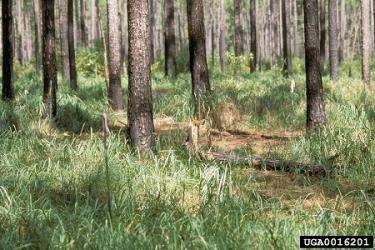When Cogongrass Attacks
Cogongrass is thought to be a native of southeast Asia, but today it grows on every continent except Antarctica and is ranked as one of the worst weeds on earth.
It first arrived in the U.S. in 1912, as packing material for a crate of Satsuma oranges, and was later planted as a forage crop. It has been spreading ever since.
Cogongrass plants range from 2 to more than 4 feet tall, with ½-inch to 1-inch-wide leaves that appear to grow directly from ground level. The leaves have a prominent, off-center, white mid-rib, and serrated edges that can feel rough. Its flowers are white, as are its fluffy seedheads.
Cogongrass spreads easily because it reproduces in multiple ways. It produces seeds—up to 3,000 seeds per seedhead—that can be carried by the wind or by animals to new locations. It also produces rhizomes, an underground stem system that can send up roots and shoots. Cogongrass can produce 3 tons of rhizomes per acre, and those rhizomes can penetrate to a depth of 4 feet in the soil and grow from 1.5 to 3 meters per year.
Once cogongrass takes hold in an area, it forms a dense mat of growth that makes it hard for other plants to survive. And because cogongrass can fuel more frequent and intense fires, that infestation can pose a significant risk to your woods.
This map can show you if cogongrass grows in your region.
I’ve got cogongrass. Now what?
If cogongrass is already growing on your property, you can take steps to control it.
How can I get more tips?
It’s simple! Enter your email below.

